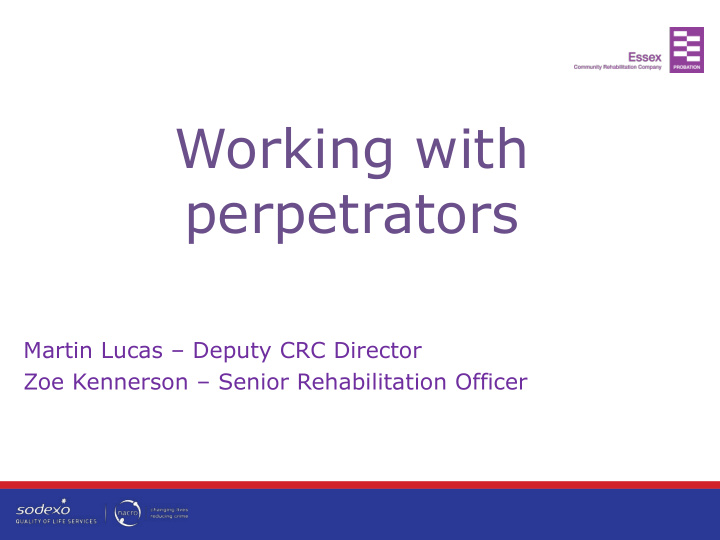



Working with perpetrators Martin Lucas – Deputy CRC Director Zoe Kennerson – Senior Rehabilitation Officer
Workshop contents Identification • Overcoming barriers – our own • Overcoming barriers – in the individual • Breaking down behaviour • Case study • Managing risks and change • Specialist services • The expertise and experience of all participants is valued.
Identification What does a perpetrator look like?
Power & control
Perpetrator risk factors Alcohol abuse 54% • Criminal record 50% • Financial problems 45% • Drug abuse 39% • Threats of suicide 35% • Mental health issues 28% • DA related criminal record 26% • Safety in Numbers, 2009
Overcoming barriers What do you find difficult about working with domestic abuse perpetrators?
Overcoming barriers Why don’t perpetrators just change?
Overcoming barriers Motivational interviewing C ontracting • E xpress empathy • D evelop discrepancy • A void argument • S upport self-responsibility •
Overcoming barriers Abusive behaviour Changed behaviour • Minimisation • Acceptance Shame • Denial • Accountability • Blame • Responsibility
Breaking down behaviour General aggression model
Case study What are the risk factors? • What can be put in place to keep people safe and • change behaviour?
Risk Factors Childhood trauma • Substance and alcohol misuse • Failure to adhere to restrictions • History of violence against family • Previous Domestic Abuse • Previous offending • Strangulation • Children present during assaults • Weapons •
Risk management and change What can you offer to manage the risks and change • behaviour?
Risk management and change Specialist services The Change Project www.thechange-project.org • The Drive Project http://driveproject.org.uk • Probation Services • • National Probation Service • Essex Community Rehabilitation Company www.essexcrc.co.uk • Building Better Relationships Programme • Tools to Help Professionals when Working with Domestic Abuse Perpetrators
Recommend
More recommend